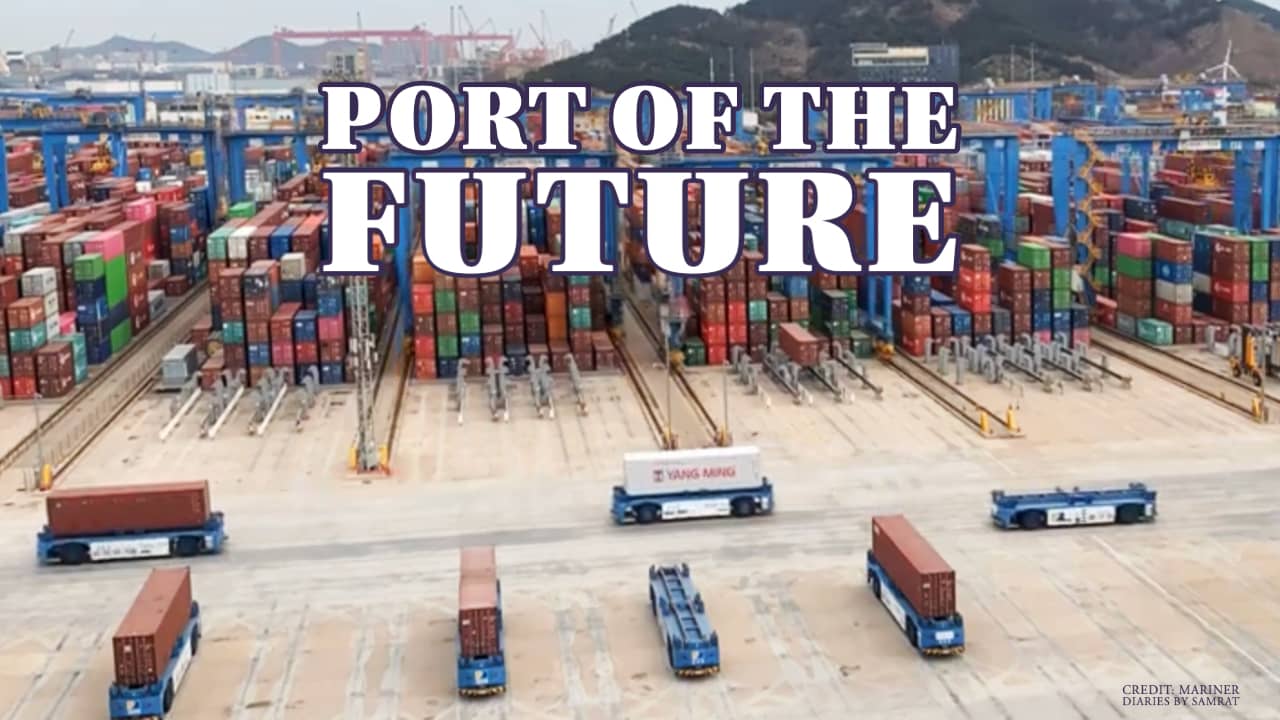
Qingdao is the World’s First Hydrogen-Powered and 5G Intelligent Port
2-minute read (30-second watch)
Shandong Provincial People’s Government has shared insights into its automated container terminal at Qingdao Port as part of the 2022 Qingdao Multinationals Summit.
Shandong Port Group and Qingdao New Qianwan Container Terminal explained that Qingdao Port is now one of the world’s leading automated container terminals equipped with state-of-the-art technologies, a high degree of automation and high loading and offloading efficiency.
It is also the first fully automated container terminal in Asia. The port has achieved average productivity of 36.2 containers per ship per hour, peaking at 52.76 containers per hour, a production efficiency that is 50 per cent higher than other ports with similar automated terminals.
Have a glimpse of the working day in Qingdao port. The automated trucks and unmanned cranes are simply wonderful to watch.
Qingdao Port can accommodate 24,000 TEU container ships with an annual throughput of 5.2 million TEU as one of the world’s largest automated terminals.
In June last year, the world’s first intelligent overhead container delivery system (in a pilot phase) was put into operation at the automated terminal.
The system was co-developed by a team of Qingdao Port engineers and the R&D team at CRRC Yangtze, with the goal of integrating the leading suspension transport technologies into the port’s operations to resolve that most difficult ‘last mile’.
The aim is to maximise efficiencies in delivering containers between the terminal, ships, transfer stations and stockyards and meet the requirements for low cost, short loading and unloading cycles, greater efficiency, full automation, higher safety and zero emissions.
Qingdao Port has claimed that it is the world’s first ‘hydrogen + 5G’ smart ecological terminal, pioneering hydrogen-powered crane technology and systems by developing a hydrogen energy-driven solution for the fuelling of equipment needed for the operation of a large port.
The system reduces carbon emissions by some 3.5 kilogrammes and sulphur dioxide emissions by 0.11 kilogrammes per TEU.
Calculated on the basis of an annual capacity of 3 million TEU, 21,000 tonnes of carbon dioxide and 640 tonnes of sulphur dioxide emissions are estimated to be cut annually.
Source: shippingazette. com
Video Source: YouTube by Mariner Diaries with SAMRAT
P.S. Easy Freight Ltd helps New Zealand importers & exporters to save money on international freight and reduce mistakes by guiding how to comply with Customs and biosecurity rules.
➔ Contact us now to learn how we can assist you.
